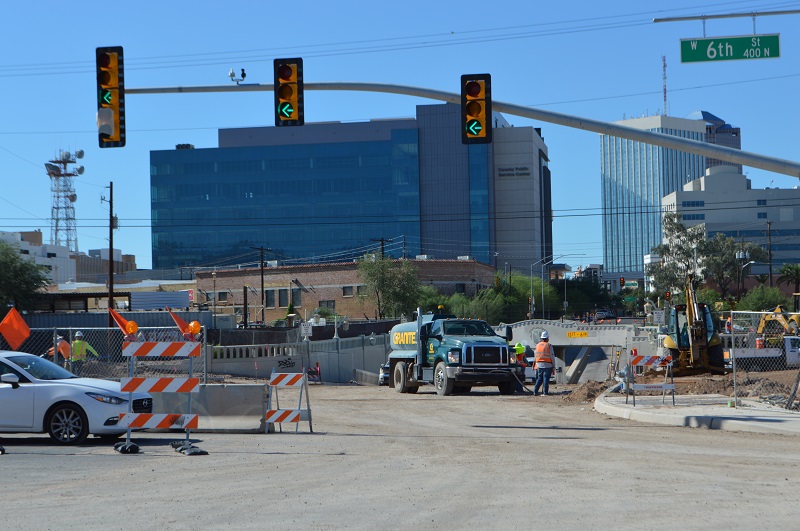Barraza-Aviation Parkway already is an efficient way to jaunt from downtown Tucson to the Golf Links Road area (or back again) but it’s going to get even better, and soon.

The corridor was designed as an urban highway, with efficient movement for through traffic and convenient exits to local streets. While it has traffic signals, it’s designed to prioritize the northwest or southeast movement. With the regional cooperation of several entities, it will become an even more useful corridor, with direct interstate access.
What we know of the road now is essentially the middle section, built in the 1990s. The City of Tucson, with Regional Transportation Authority funding, is hard at work creating the northwestern end right now. The Arizona Department of Transportation is preparing to start work on the southeastern end, with regional funding programmed by Pima Association of Governments into its five-year transportation improvement program.
Southeast end: connections to I-10
Planning has long been underway for an 18-phase extension of Barraza-Aviation Parkway to meet with I-10 east of Interstate 19.
This year, the undertaking completed a milestone with a design concept report and environmental study guiding the massive project, which has been divided into 18 phases.
The southeast connection hit another significant milestone when two phases were designated to receive hundreds of millions of dollars from the Infrastructure Investment and Jobs Act. With that new funding, the Arizona Department of Transportation can start improving the Kino Boulevard interchange with I-10 and add a new interchange at Country Club and I-10.
The new federal funding allows the state to proceed with the preliminary work (design, purchasing right-of-way, utility work) and then to begin construction on both of those interchanges.
ADOT worked with PAG to ensure the funding is properly programmed into this year’s transportation improvement program, an important step that allows the funds to be used in this fiscal year and in those that follow.
Federal funding for interstate projects such as these interchanges is “foundational” to helping the local traffic network perform well, and this is a “major project” as defined by the federal government, said Rod Lane, ADOT’s district engineer for the Tucson district.
Without the funding, neither project was expected to begin construction until fiscal year 2024.
“We’re really excited about this opportunity,” said PAG Executive Director Farhad Moghimi. “We’ve been working closely with the state in trying to expedite some of these projects, and thankfully we’re in a position to be able to do that. I want to thank ADOT for working with us.”
Northwest end: Downtown Links
On the northwest side, City of Tucson construction crews have been working for years on an extensive construction project to expand Barraza-Aviation Parkway so it continues past the current termination at Broadway just east of downtown.
Once the project, known as Downtown Links, is complete the roadway will skirt the north end of downtown and provide easier access to Interstate 10 via St. Mary’s Road. If you’re heading to or from the highway, you won’t have to go through the downtown streets anymore.
The Downtown Links project is one of the most complex in the 20-year, Regional Transportation Authority’s voter-approved plan. It involves massive drainage improvements and reconstructing several of the old railroad overpasses that allow access between downtown and spots north. All of that is in addition to building the new roadway to take traffic from Barraza-Aviation Parkway to I-10.
For more on that project, check out the latest Downtown Links project update on the RTA website.

